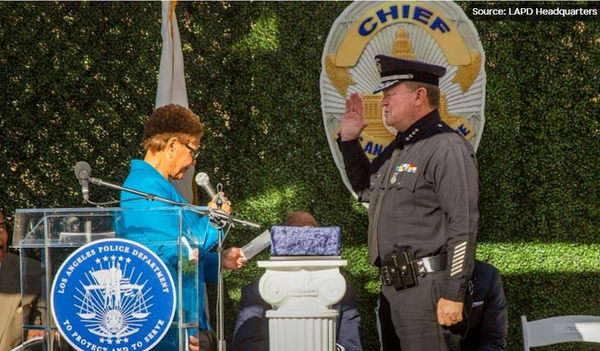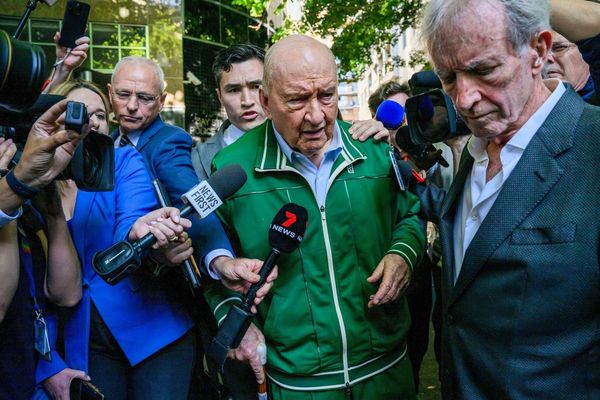Ahead of Call of Duty: Vanguard’s release, we had a chance to sit and talk to Sledgehammer Games’ art director Joseph Salud and associate art director Sandy Lin-Chiang.
The upcoming first-person shooter is getting back to World War II, but with a twist: this time, the developer behind Call of Duty: WWII has mixed historical facts and fiction to make sure the game offers a modern take on a widely explored setting.
But it doesn’t matter where Call of Duty goes, some things always stay the same. From particle effects and destruction to textures, Sledgehammer says it really “pushed” the PS5 hardware to offer impressive graphics, while preserving 60fps, one of the franchise’s pillars.
This interview has been edited for clarity.
FTW: When we attended a Call of Duty: Vanguard presentation event last Summer, you said you were moving away from a Band of Brothers-like story as seen in WWII, and depicting “a world at war.” How’s that affected your work and the art direction, overall?
Joseph Salud: For Call of Duty: WWII (in 2017), there was a lot of inspiration from the previous games. When you go back into that game, you can clearly identify what the inspiration points were. I think with this one, we wanted to take it to more modern lands, we were inspired a lot more by more recent and contemporary influences, and we were also inspired by epic films of the past – the classic epics. That really shaped our approach for the art direction. Some of the things we wanted to do to make that feel more contemporary were our compositions, our color palettes, the different biomes everywhere, [and] we also pursued different types of characters. The last game was more about the European campaign, so we wanted to show the broader sense of the war. We traveled to all the different campaign fronts, from the Eastern Front to the Pacific and North Africa, just to get that diversity and variety.

[We asked what movies inspired Vanguard, but the PR cut in to say it was preferable for the developer to not identify any influences. What follows is Salud’s response after the interjection.]
JS: What I can say is that, if you look back at classic epics, there are epics out there, without being specific around the films, that have been in North Africa, for example, and not necessarily for World War II but around a similar timeframe. And they do tell large, expansive stories that have visual looks, specific ways they frame the landscape, the cinematography – those were things we paid attention to.
[At this point, Salud was about to drop some names again, but he remembered he was told not to do so, and we started laughing. With good timing, Sandy Lin-Chiang got in the conversation and offered some additional comments on the same topic.]
Sandy Lin-Chiang: Because we want to feel expansive and make the world feel bigger than it is as the player goes through this visual journey, we looked at all kinds of film form – the epic genre Joseph talked about, even modern films. We looked at how filmmakers achieve that from a cinematography point of view. It’s not just films. We looked at fine arts, video games, any type of art form where we could find inspiration. We are not limited to specific films, or only to films, it’s just all kinds of inspiration that we could find.

Call of Duty: Vanguard is now looking into multiple points of view, fronts and even gameplay experiences. Is art direction changing accordingly, and how did you make sure that every perspective had a fresh and different look throughout the game?
JS: There’s a lot of different tools we have from an art direction standpoint that lends to keeping things fresh. One of the things that we have is the “color script” or “visual script,” and what we do is we think about, like, a tasting menu – you go to a really nice restaurant and you have ten courses, and the staff says, ‘What do you want to eat first? Oh, this is going to be very sweet.’ And then, ‘Oh, we’re going to cleanse your palate, and then we’re going to add a little twist,’ and things like that. So that your experience goes up and down, up and down – that’s the same thing that we do. We look at all the locations that we want to go to, and think about the different times of day, the color palettes, and the color grading on top of that. And we laid it out in a script, just like music. We tried to play with it as it goes along so that the experience feels fresh and new.
SLC: Additionally, we also looked at the characters’ arcs, because the campaign is telling the stories of characters, their transformation, and for this game we really wanted to focus on characters going from nobody to heroes. What is that transformation, what are they going through to get them to be the hero at the end? How did they come together, become the Special Forces, or the Vanguard, as a group and the individual journey that we focus on for each level they go through? We’re really tapping on those, how they feel, and also inform some of the art direction, the color palettes that they go through. For example, Polina – we introduced her from the very beginning – she is in her hometown, in her bedroom, with her partner and her family, and then she experiences how her city gets bombarded. The entire city gets destroyed, and her journey includes losing her father and then, from someone who didn’t really use weapons and pick up a gun, becoming the sniper that every German was trying to go after. She was a target. When you play Stalingrad for the second time, in a different type of weather, it’s harsh, it’s Winter. So, that kind of helps to inform the color palette from very pleasant at first to something very dramatic that she’s going through emotionally. In Winter, it’s like she’s kind of calm, she’s trying to get her revenge, and that also informs how we make some decisions when it comes to art direction.

The game has a hybrid approach to story, taking inspiration from real World War II facts but applying some twists in order to make it more appealing and approachable to players. How was it to find a balance between staying true to history and searching that blockbuster vibe players have come to expect from Call of Duty?
JS: For both our World War II games, we have a World War II historian that has spent his entire life studying history. I think for this game it was absolutely a really fun challenge to keep it as realistic as possible. And, at the same time, the story can be completely plausible even if it’s fiction. They’re based on people who have existed and types of people that have existed, and the circumstances for them to have met? It’s still within the realm of plausibility and believability. We put a lot of research into making sure that every creative decision that we’ve made is rooted in historical data.
SLC: A lot of this is based on history, and we also have a little bit of fiction as the story goes. In the end, we’ve tried to stay true to the truth but also, since we’re trying to do a more modern take, there’s some aspect within our imagination trying to get the storyline to work and also trying to make sense of the world we’re creating – the heroes, the journey, how they come together.
As a studio, are you positioning as the team working on historical Call of Duty games set in a distant past? Is that a label you like, and do you feel it could grant your team to be as unique as possible in the family of brands at Activision?
SLC: Sledgehammer as a creative studio, in general, no matter the creative challenge we’re taking upon ourselves, we’re trying to do the best that we can. So when we do historical games, we want to make sure that they are as plausible and believable as possible. Everything goes back to research, tons and tons of research. When you go back to epic films from the ‘60s and ‘70s and study the process they took on, they might feel larger than life, romantic in some senses, but they’ve absolutely done their research. And that research is extremely important – they’re trying to tell a story that can connect to the viewer and so that it is powerful. If we don’t do the same work, that connection – you don’t get it. The power and the meaning of the experience aren’t going to be as potent. That’s important for us as a studio, whatever experience that we bring, we want to make sure that it connects to our audience and feels powerful. Any game that you play and doesn’t have that, doesn’t feel as strong.

The Call of Duty: Vanguard footage showcased thus far is really looking so close to what players have come to expect from next-gen. We do know that power is nothing without control, and overall there’s been a shortage of games really looking next-gen. How did you achieve that feeling through the campaign?
JS: Yeah, we pushed that thing. The process that we take as a studio is to push it all the way to the edge and sometimes we go over. During the last part of our development cycle, one thing that we need to make sure it runs at 60fps – it’s one of the tenets of our game. And, simultaneously, we’ve absolutely pushed every dial that is possible for the PlayStation 5. I can tell you, we pushed it (laughs).
SLC: I think doing something photorealistic is always the strength coming from our studio. It’s also something that we constantly push as a team and we did lots of photogrammetry, we go look at our sky and actually use it in one of our levels. Environment-wise, tessellation – we increased that. We have texture density, more textures that we can use, more layers, and particles – we have ten times more, any given time that we can have more particles that we can use. And destruction, it’s something we definitely set up to do to make the war feel more interactive. So we have more runtime physics and then we feel the destruction bump to weapon impacts – that’s something that we really pushed hard on for this game. It’s just trying to create an even more realistic player experience.
Call of Duty: Vanguard is releasing Nov. 5 for PC, PS4, PS5, Xbox Series X|S and Xbox One.
Written by Paolo Sirio on behalf of GLHF.







